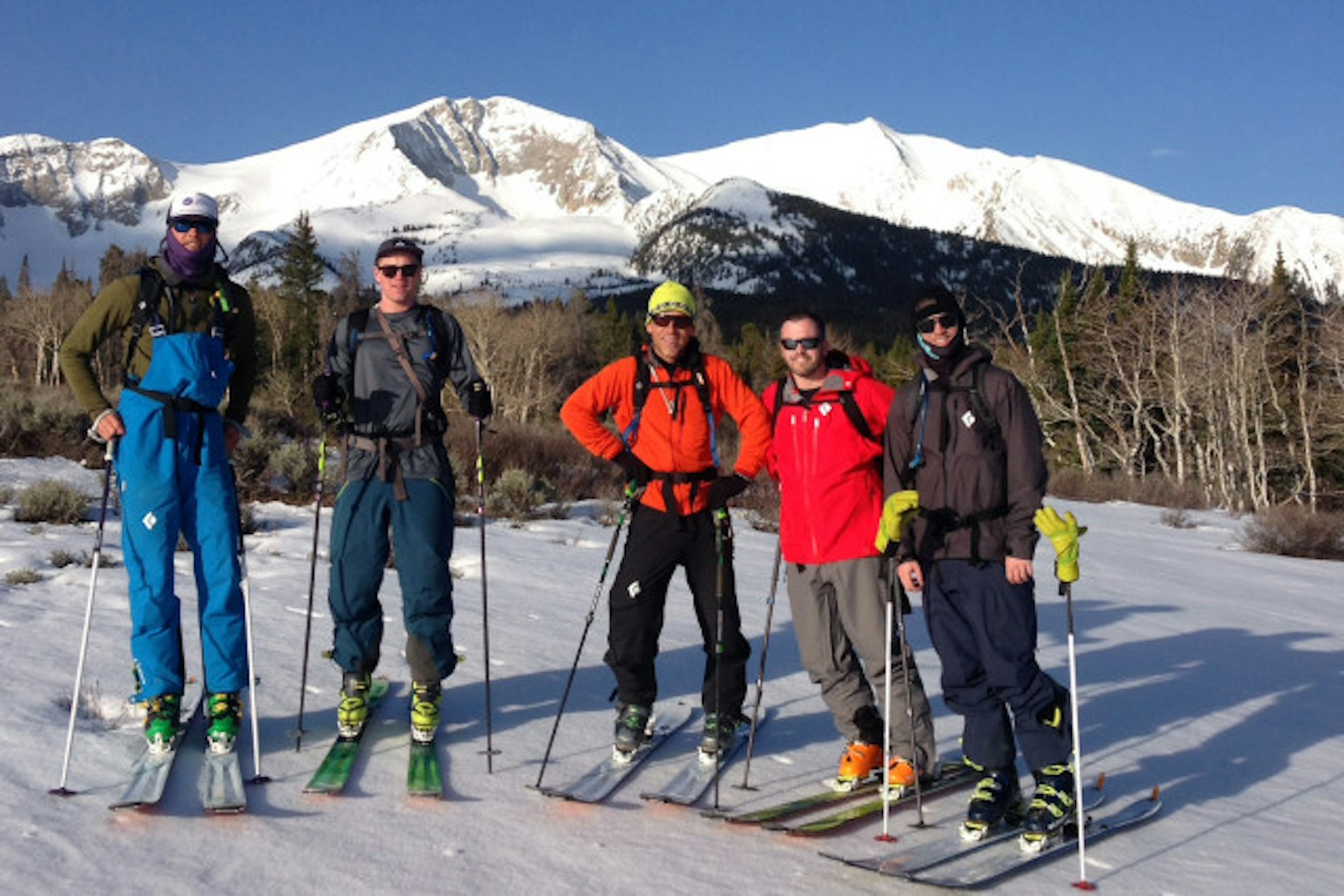In a state filled with fifty three 14,000-foot peaks, mountains of lesser elevation can often go overlooked. What many may not know is that there are countless other challenging and classic Colorado descents littered throughout the state. Mt. Sopris is just one of them. The 12,966-foot summit reigns over the town of Carbondale, Colorado, conjuring up thoughts of the Lonely Mountain in The Hobbit, and dominating the surrounding landscape.


While the mountain serves as an important landmark in Carbondale, the monstrous rock is also an ideal testing ground for the latest and greatest in backcountry ski gear. Last week, myself and fellow FREESKIER staffers Damian Quigley and Jason Smith joined members of the Backbone Media crew Fielding Miller, Sam Coffey and John Dicuollo, to test some of the new offerings from Black Diamond, Fritschi Diamir, Polartec and Abominable Labs.
My vehicles for this uphill excursion—which featured over 4,300 vertical feet of elevation gain—would be the Black Diamond Carbon Megawatts outfitted with Fritschi Diamir Vipec 12 bindings. The crew from Backbone were speed demons on the uphill, so I was thankful for the lightweight setup. The pair of skis weighed in at eight pounds four ounces and the two bindings were two pounds six ounces, resulting in a combined weight of 10 pounds 10 ounces. Not too shabby for a pair of 120 mm waisted skis, if you ask me.
The Vipec binding also proved its uphill value. The heel riser was easy to access and maneuver, making touring through variable aspects a bit less strenuous. Additionally, the micro-adjustable width toe wings are compatible with a variety of tech boots on the market. This ensured a quick on-and-off of the skis when lower elevation conditions warranted a boot pack over skinning (I was rocking the Scarpa Freedom SL’s for reference).
As for eyewear, I was donning the A-Bom goggle from Abominable Labs. The A-Bom seeks to rid the ski world of foggy goggles—of course, we’re not talking about the popular aprés bars. The goggle is built with A-Bom’s KLAIR technology—a heat-conductive film situated between the two-part lens that heats up via battery to dispel fog.
Watch: Introducing the A-Bom Goggle.
On a day when temperatures ranged from cold in the early morning to balmy during the ascent and then frigid wind on the summit, there was ample opportunity for the A-Bom‘s to fog up. However, thanks to a push of the button on the side of the goggle before embarking on the six hour journey, these babies kept my vision crystal clear.
As just previously mentioned, the weather was a bit variable throughout our adventure. I wore the QOR Baselayer Crew LS, constructed utilizing Polartec Power Wool. Power Wool is built with the combination of merino wool on the inside and synthetic fibers on the outer layer. The wool is naturally odor resistant, is breathable even when wet and is able to wick moisture away from the skin and to the outer synthetic construction. Throughout my excursion, whether it was creeping up the steeper pitches and sweating buckets, or rounding out the descent and battling bone chilling wind, the baselayer kept me as comfortable as possible given the conditions.
As for outerwear, I was sporting the Black Diamond Vapor Point shell and Mission pants. Both garments are 3-layer Gore-Tex pieces, ensuring high level protection from the elements should weather have rolled in.


On this day, I found the Vapor Point’s minimalist, lightweight design quite beneficial when skinning in the sun. The double vents on each leg of the Mission pants were also useful in allowing building heat to escape. Once atop final approach along the ridge, however, the wind picked up, and temperatures plummeted. I was thankful for the 3-layer protection the kit had to offer.
After topping out on the summit, it was time for the fun to start. The Carbon Megawatts performed admirably for a ski meant for deep snow, its rockered tip floating above the softer snow at lower elevation and its less rockered tips helped drive through turns in the varying conditions. Its lightweight carbon construction certainly didn’t result in any lack of stability, either.


All-in-all the day was a grand success. Our 4,300 feet of climbing was rewarded with some delectable spring corn and some high fives to go along with it.
Related: Testing the all-new Black Diamond Dawn Patrol 25 pack



![[GIVEAWAY] Win a Head-to-Toe Ski Setup from IFSA](https://www.datocms-assets.com/163516/1765920344-ifsa.jpg?w=200&h=200&fit=crop)


![[GIVEAWAY] Win a Legendary Ski Trip with Icelantic's Road to the Rocks](https://www.datocms-assets.com/163516/1765233064-r2r26_freeskier_leaderboard1.jpg?auto=format&w=400&h=300&fit=crop&crop=faces,entropy)




![[GIVEAWAY] Win a Head-to-Toe Ski Setup from IFSA](https://www.datocms-assets.com/163516/1765920344-ifsa.jpg?auto=format&w=400&h=300&fit=crop&crop=faces,entropy)


